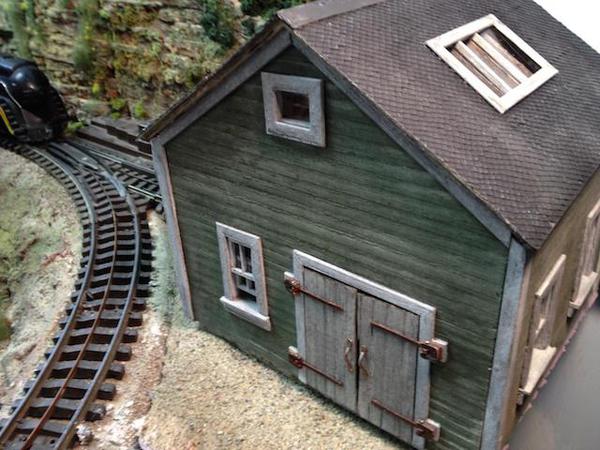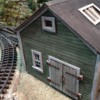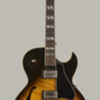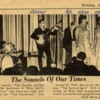We were away over Labor day weekend. And today's post will be a bit strange.
We flew from L'ville to Philly, rented a car and picked up friends and drove to Burlington, VT along beautiful lake Champlain. The town and region are beautiful! While walking along a nice bike path we rounded a corner and there was a roundhouse... well... not exactly round...only 7 stalls, but it's round-ish, has a working turntable and is a working repair facility for the Vermont Railroad. They were replacing a drive axle in a Blomberg truck. I took some stills and a movie doing this. I'm editing the movie now for inclusion on YouTube. There were a number of diesels in the yard and shop, all different colors and eras, and I took a movie of a moving engine. How much fun was that?
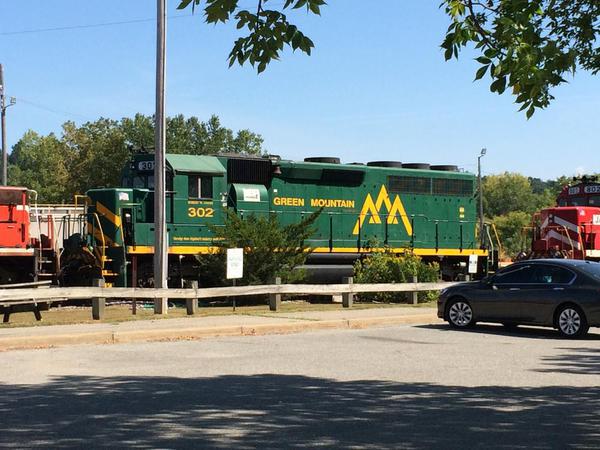
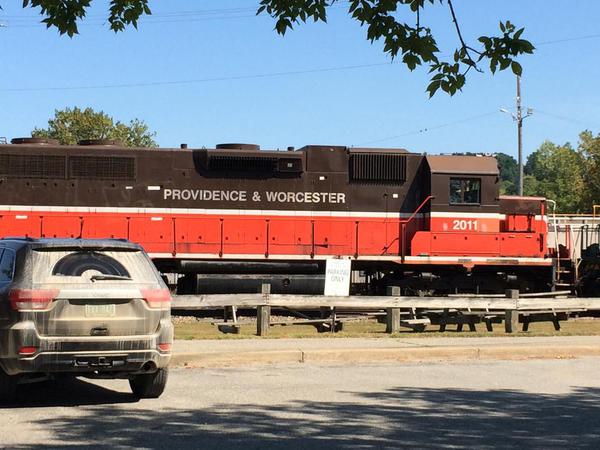
This is clearly, not the easiest way to install a new axle. In a big shop, the entire truck is maneuvered with and overhead crane. They were having trouble with the journal box being cocked at the wrong angle.
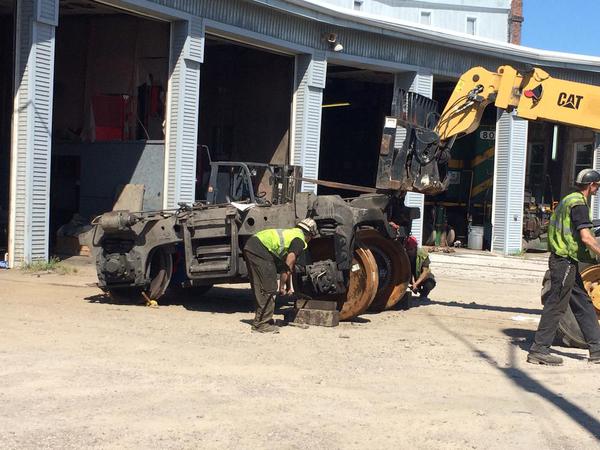
A working turntable with the other Blomberg sitting on it. This was a real working railroad, not a scenic museum. It used to be part of the Rutland.

The roundhouse was modernized with 'normal'-sized windows replacing the large industrial size that used to be there. The front had new siding on it hiding the original brick.
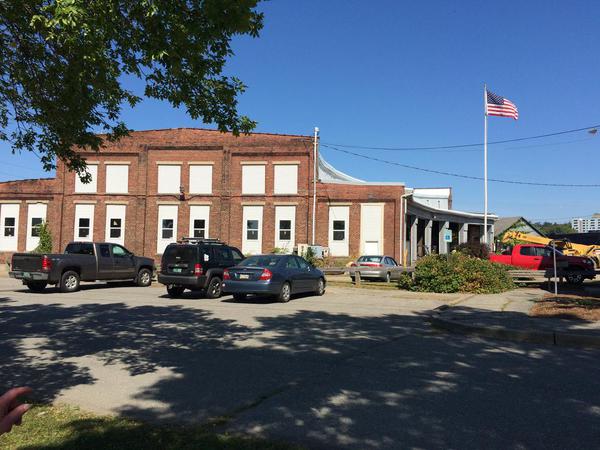
Some of these engines were running especially that GATX Power engine painted in UP colors. That's the one that went down the track as we walked further down the bike path past the yard.

It was a real bonus seeing this. That same day we took a guided boat ride around the lake area near Burlington, had refreshments at a lovely floating boat house, and had a great dinner that night.
On Sunday, we went out of Burlington to Shelburne, a town just south of the city, where we visited the Shelburne Museum. We saw this from the road on our way into Burlington. it looked interesting so we planned to see it. It was established by Electra Ward, an heiress to the Domino Sugar Fortune who married a Vanderbilt. She bought all the buildings and had them reassembled on the large property. She also bought this.

This is the lake steamer Ticonderoga in its entirety. It's 225 feet long and weighs 892 tons. It's lying in a depression in a meadow over 100 feet above lack level. When the ship was decommissioned in 1954, Electra had it moved to higher ground for $225,000. They build a special rail carriage to support the ship and moved it up a specially built railroad. They moved the track from the back to front as they progressed up one level to the next. The ship was then completely restored in all its splendor. It's a sight to behold.
It was built in 1904 and was a state-of-the-art side-wheeler. The paddles are feathering which means there's a cam that keeps the paddles vertical as a they enter and leave the water and perpendicular to the line of travel when pushing. The walking-beam engine has one massive long-stroke piston, with and air pump to remove the spent steam back to the condenser where is generates some vacuum exerting more force to the crank.
With a single cylinder, the engine couldn't be stopped at the TDC or BDC or it would bind the crank. There was a crank position gauge on the wall so the engineer would stop travel when the piston was in mid-stroke so the engine could be restarted.
The dial on the wall is the crank position gauge.
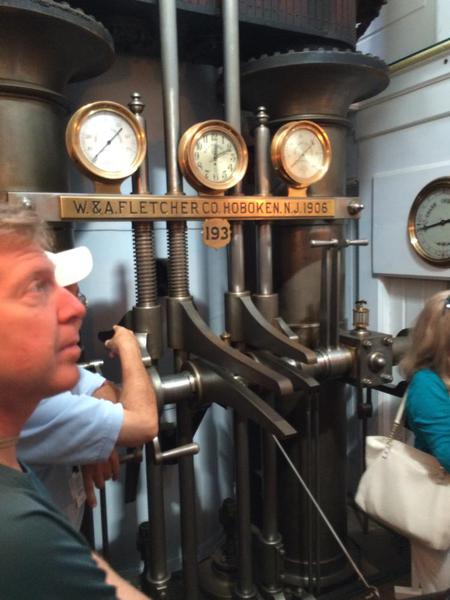
On the roof is the beam. Really nice piece of machinery for us machinery lovers. It was able to do 18 knots.
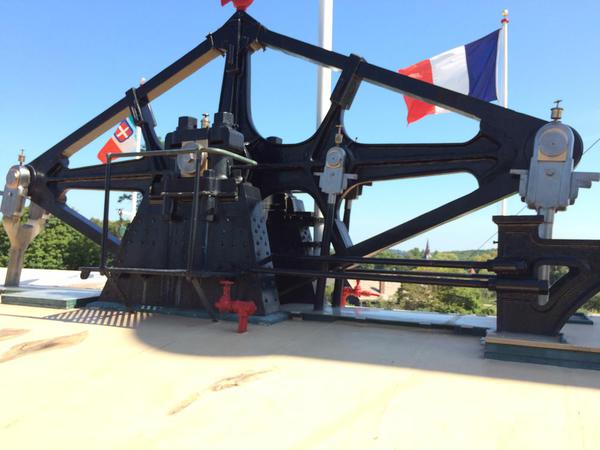
The wood work in the ship was exceptional. It was the pride of the fleet. Folks would take the train from NYC to the bottom of Lake Champlain. It was then a day trip to Burlington, Plattsburgh and places north. There was only one class.
It had two fire-tube, horizontal, locomotive-style boilers that were hand fired. It was a ghastly job. It used anthracite pea coal, and lots of it. Ventilation in the boiler room was minimal, and in the summer, it was literally hell in that space.
When we returned to the Delaware Valley, we spent the day in Lambertville, NY. There are some Victorian treasures in that river town and I took pictures of roof, gable and corbel designs for future reference. It was neat to see slate roofs in very similar design as I'm using on the distillery.
I had one shop day last week and started the left side roofing. I am definitely running out of roofing and made another order with Rusty Stumps.
On a completely other topic, on Thursday I'm at the super market and get a panic call from my wife, "There's water pouring into the master bath from the light fixture in the middle of the room!" I got home in a minute. The bathroom upstairs' floor was wet. I turned off the house main. I couldn't see where the water was coming from so I called a plumber who got there in about two hours. He quickly found the problem, which I should have seen. The nylon nut that holds the toilet feed line to the toilet fractured opening up that line. That's a $5 part!
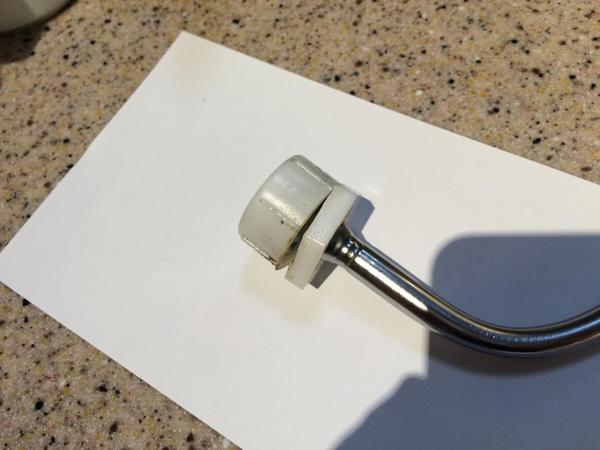
Now, I'm telling you all this because of this fact. Whenever we go away for more than a day, I shut off the house water main valve. That pipe broke spontaneously. It could have broken on day one of our 7 day trip. If I didn't turn off the water, that line would have destroyed our home. It has happened on one house on our street and ServePro was there for a week. It also happened in our old neighborhood in Pennsy, and the entire 2nd floor collapsed. The house had to be gutted.
This can happened with toilet feeds and also washing machine hoses. They're bad enough when you're home, but when you're away, the results are catastrophic. So while it's a pain in the butt, it's really a nice insurance policy against disaster. Take a minute and turn off the water.
Tomorrow, I get some more work done.




